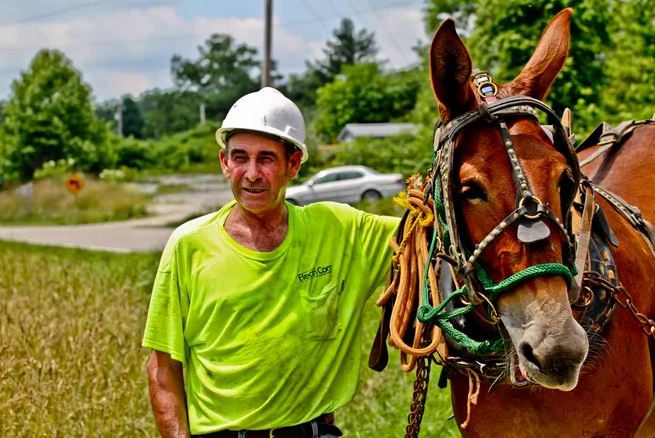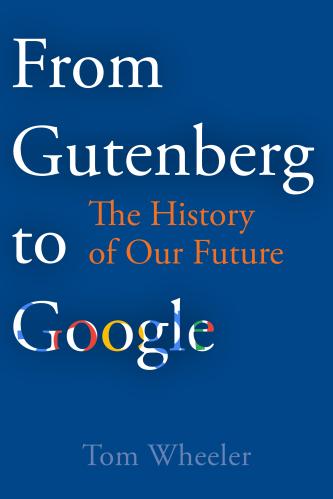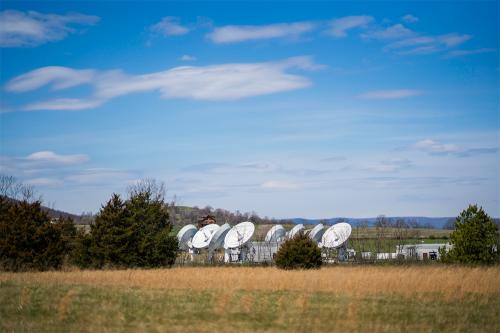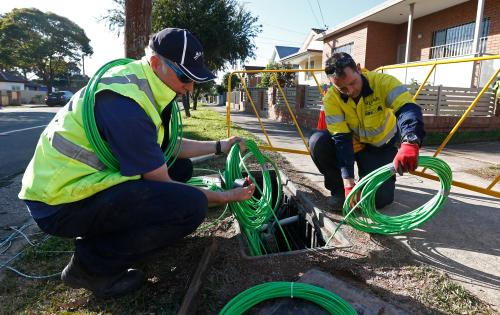Jackson County, Kentucky, has one stop light in its 347 square miles—but also high-speed fiber optic internet service to rival any big city. In the coal country of eastern Kentucky, the 800-person town of McKee is the hub of a one-thousand-mile fiber-to-the-home network covering two of the nation’s poorest and most remote counties. The fiber link was built almost entirely with dollars from the federal government. It is a powerful example of the infrastructure of the 21st century and the importance of extending those connections to all Americans.
President Biden’s infrastructure plan includes $80 billion to connect unserved areas to high-speed broadband networks. The plan has been christened the American Jobs Plan because of the jobs that will be created to build the new infrastructure. The Kentucky experience illustrates the power of fiber connections to create jobs after the construction crews have gone home. When the fiber came to the areas around McKee, employment increased despite the collapse of the area’s main employer, the coal industry.
Next door to Jackson County and also on the fiber network, Owsley County is one of the nation’s poorest counties. Yet, between 2014, when the fiber network was completed, and 2019, unemployment in the county fell five percentage points, more than any other county in the state. Today, in a classic “if you build it, they will come,” residents of Owsley and Jackson counties work online, mostly from home, for companies as diverse as Amazon, Hilton, and Apple. They have professional, high paying jobs as customer service agents, tech support and health insurance support. The network, with only 7,000 customers, has created 1,100 jobs generating $24 million in new annual payrolls through the end of 2020, according to Keith Gabbard, its general manager.
The mountain hollows around McKee (pronounced “hollers” by the locals) were once home to Daniel Boone. Today, homes can use urban-grade high-speed fiber connections to stream Daniel Boone movies and television shows. But the importance of those high-speed connections is far beyond television shows. The ability to work from home was standard practice long before the rest of us discovered it during the pandemic. The ability to find employment without leaving home has been important to everyone, but particularly important to individuals with disabilities. Thanks to the fiber-to-the-home connection, when COVID hit, students were prepared for remote learning.
It was the network of the 19th century—the railroad—that created the King Coal economy throughout the Appalachian region. But then King Coal died and the areas suffered. The network of the 21st century—the broadband internet—is helping recovery in those areas. There is a profound difference between the two networks, however. The railroad was extractive, taking assets from the community to be consumed elsewhere. Broadband fiber is additive, bringing economic activity from afar to the area. Residents do tech support for Apple, for instance, just as if they were in Silicon Valley instead of an Appalachian valley.
But it is neither inexpensive nor easy to make the new broadband connections. Together, Owsley and Jackson Counties have slightly over 18,000 residents and the fiber network passes 7,800 homes. At a cost of about $50,000 per mile ($50 million for the whole project), building a fiber network to serve an average of fewer than eight homes per route mile is not a get-rich-quick effort. The mountainous terrain required the use of a mule named Old Bub to haul the cable. Yet, the local telephone cooperative—Peoples Rural Telephone Cooperative (PRTC)—stepped up to the challenge with the help of funding from the federal government. The price for 100 Megabit symmetrical internet service is only $39.95 per month, far below the national average.
As Chairman of the Federal Communications Commission (FCC) during the second Obama term, I visited McKee to see first-hand what was possible in the most unlikely of circumstances. The FCC ran the government’s major support program for broadband construction in high-cost rural areas, but the effort was failing to deliver for tens of millions of Americans. It was frustrating how often we heard the bigger telephone companies complain they could not expand their broadband footprint, even with subsidies, because it was “not profitable.” The experience in Jackson and Owsley Counties shows the value of non-for-profits to deliver where the profit motive is insufficient impetus.
In the closing days of the Obama administration, frustrated by how subsidies to local telephone companies were still not making broadband ubiquitous in rural America, the FCC looked at a new approach. Why not build high-speed broadband to rural areas the same way roads are built to those areas? Instead of subsidies to incumbent telephone companies, pay for the buildout once. The study estimated that it would cost about $80 billion to accomplish that goal and get all Americans online. The Biden infrastructure plan calls for exactly that expenditure.
If the infrastructure plan is adopted, the story of McKee, Kentucky could be the story of every remote, rural, high-cost area in the United States. Fiber networks are not just a technology—they can change peoples’ lives. When I caught up with Keith Gabbard, the general manager, he read me a text he had just received from a subscriber who had finally been able to move with his wife and two daughters out of his mother’s home: “Thought you might like to know that your internet has made it possible for us to buy a new home!” Gabbard told the story of another person who moved from New York because his cybersecurity work could be done on the fiber network.
The story of McKee, Kentucky—where a fiber optic connection has changed lives, created jobs, and recruited residents—is a story that should be available everywhere.
Amazon and Apple are general, unrestricted donors to the Brookings Institution. The findings, interpretations, and conclusions posted in this piece are solely those of the author and not influenced by any donation.
The Brookings Institution is committed to quality, independence, and impact.
We are supported by a diverse array of funders. In line with our values and policies, each Brookings publication represents the sole views of its author(s).










Commentary
Changing lives by connecting all Americans to broadband internet
May 19, 2021